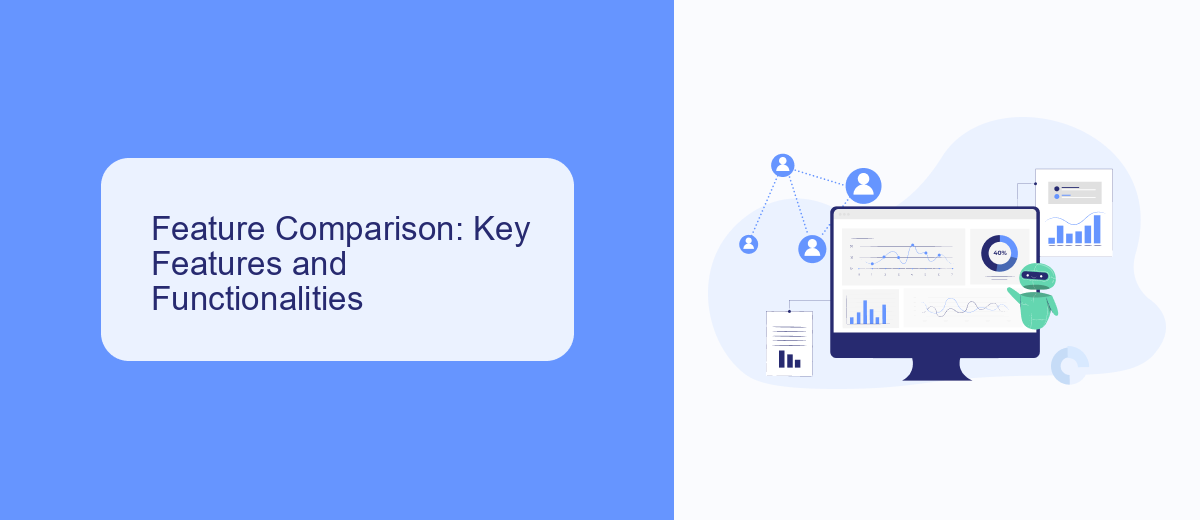In today's rapidly evolving digital landscape, businesses are increasingly relying on automation to streamline operations and enhance efficiency. Two prominent players in this arena are UiPath and Workato. This article delves into a comparative analysis of these leading automation platforms, examining their features, strengths, and potential drawbacks to help you make an informed decision for your organization's automation needs.
Introduction: Overview of UiPath and Workato
UiPath and Workato are two leading automation platforms that help businesses streamline their workflows and improve efficiency. UiPath focuses primarily on robotic process automation (RPA), enabling organizations to automate repetitive tasks and processes. On the other hand, Workato specializes in integration and automation, offering a platform that connects various applications to create seamless workflows.
- UiPath: Primarily focused on RPA, allowing for the automation of repetitive tasks.
- Workato: Specializes in integration and automation, connecting various applications.
- SaveMyLeads: A service that helps set up integrations quickly and efficiently.
Both platforms offer unique features and capabilities that cater to different business needs. UiPath excels in automating complex processes with its robust RPA tools, while Workato provides a versatile integration platform that can connect multiple applications. Additionally, services like SaveMyLeads can further enhance these platforms by simplifying the setup of integrations, making it easier for businesses to achieve their automation goals.
Feature Comparison: Key Features and Functionalities

When comparing UiPath and Workato, several key features and functionalities stand out. UiPath excels in robotic process automation (RPA) with its advanced capabilities in automating repetitive tasks, offering a wide range of pre-built templates, and providing extensive support for attended and unattended automation. Its user-friendly interface and strong community support make it a preferred choice for businesses looking to streamline their operations through automation. Additionally, UiPath’s integration with various third-party applications enhances its versatility in handling complex workflows.
Workato, on the other hand, is renowned for its powerful integration and automation platform. It enables seamless connections between various applications and services, simplifying the process of data synchronization and workflow automation. Workato’s low-code/no-code environment allows users to create integrations with minimal technical expertise. For instance, services like SaveMyLeads can be integrated easily to automate lead management processes. Moreover, Workato’s real-time monitoring and error-handling capabilities ensure efficient and reliable automation across different systems. Both platforms offer robust solutions, but the choice depends on specific business needs and the level of automation required.
Pricing and Licensing: Cost Considerations

When considering UiPath and Workato, it's essential to evaluate their pricing and licensing models to determine the best fit for your organization. Both platforms offer distinct pricing structures that cater to different business needs.
- UiPath: UiPath offers a subscription-based pricing model, which includes various tiers based on the number of users and the level of functionality required. They provide a community edition for small businesses and individual developers, as well as enterprise plans for larger organizations. Licensing is available on a per-user or per-robot basis.
- Workato: Workato, on the other hand, employs a usage-based pricing model. Their plans are structured around the number of tasks or workflows executed per month. They offer different tiers based on the volume of integrations and the complexity of automation needs. Workato also provides custom pricing for enterprises with high-volume requirements.
In addition to these platforms, services like SaveMyLeads can help streamline the integration process by offering pre-built connectors and automated workflows. This can significantly reduce the time and cost associated with setting up and maintaining integrations, making it a valuable consideration in your overall cost analysis.
Pros and Cons: Advantages and Disadvantages

When comparing UiPath and Workato, it's essential to weigh their advantages and disadvantages to determine which tool best suits your needs. Both platforms offer robust automation capabilities but differ in their approach and target audience.
UiPath is known for its powerful robotic process automation (RPA) capabilities, making it a strong choice for businesses looking to automate complex, repetitive tasks. On the other hand, Workato excels in integration and workflow automation, providing a user-friendly interface for connecting various applications and services.
- UiPath Advantages: Advanced RPA features, extensive community support, and strong scalability.
- UiPath Disadvantages: Higher learning curve, potentially higher costs for enterprise solutions.
- Workato Advantages: Easy-to-use interface, strong integration capabilities, and quick deployment.
- Workato Disadvantages: Limited RPA functionality, can be expensive for smaller businesses.
For businesses focused on seamless integration of their apps and services, tools like SaveMyLeads can complement Workato by providing pre-built integrations and automating lead management processes. Ultimately, the choice between UiPath and Workato depends on your specific automation needs and the complexity of your workflows.
Conclusion: Best Suited Use Cases
When deciding between UiPath and Workato, it's crucial to consider the specific needs and use cases of your organization. UiPath excels in robotic process automation (RPA) and is best suited for companies looking to automate repetitive, rule-based tasks across various applications. Its strong capabilities in handling complex workflows and integrating with a wide range of enterprise systems make it ideal for large-scale automation projects in industries such as finance, healthcare, and manufacturing.
On the other hand, Workato shines in the realm of integration and automation for business applications. It is particularly effective for organizations seeking to streamline their workflows by connecting disparate systems and automating data flows between them. Workato's user-friendly interface and extensive library of pre-built connectors make it a great choice for businesses aiming to quickly set up integrations without extensive coding. For instance, services like SaveMyLeads can be seamlessly integrated using Workato to automate lead management processes, enhancing efficiency and productivity. Ultimately, the choice between UiPath and Workato should be guided by the specific automation and integration needs of your business.
FAQ
What are the primary differences between UiPath and Workato?
Which platform is easier to use for non-technical users?
Can both UiPath and Workato integrate with popular business applications?
How do these platforms handle scalability?
Are there any services that can help implement and manage these automation solutions?
If you use Facebook Lead Ads, then you should know what it means to regularly download CSV files and transfer data to various support services. How many times a day do you check for new leads in your ad account? How often do you transfer data to a CRM system, task manager, email service or Google Sheets? Try using the SaveMyLeads online connector. This is a no-code tool with which anyone can set up integrations for Facebook. Spend just a few minutes and you will receive real-time notifications in the messenger about new leads. Another 5-10 minutes of work in SML, and the data from the FB advertising account will be automatically transferred to the CRM system or Email service. The SaveMyLeads system will do the routine work for you, and you will surely like it.
